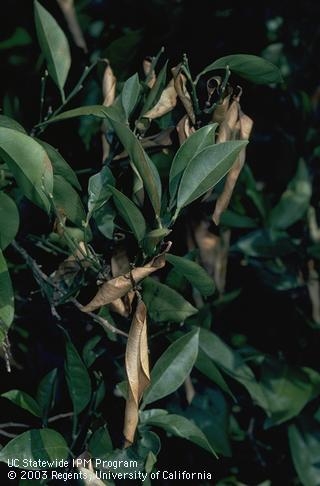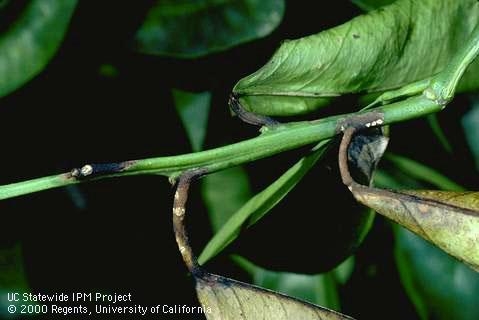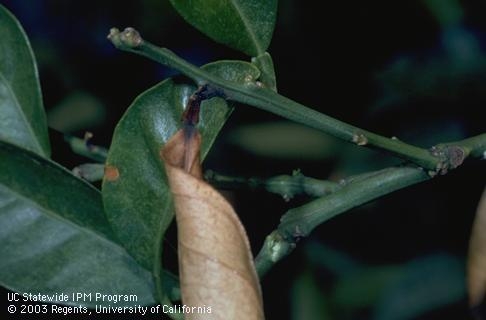Cold, windy, rainy weather provides ideal conditions for the development of Citrus blast, a disease that affects many varieties of citrus grown in Butte County, including oranges, grapefruits, lemons and mandarins. Citrus blast is characterized by individual leaves that rapidly wilt, dry up, and die on the tree. The leaf stem turns brown and a brown lesion will form on the twig where the infected leaf is attached. The leaf blades may drop or remain stuck on the tree but the dead leaf stem (petiole) often remains attached to the twig. On young vigorous shoots the lesion at the base of an infected leaf may grow around the shoot, girdling the twig and causing twig dieback. On damaged twigs a reddish-brown crust will form over the diseased spot.

The most effective control of citrus blast is achieved by spraying a protective fixed copper material before the first heavy rain in November. Sprays applied in the fall will help protect leaves and shoots from winter storms, but must be applied before blast injury occurs. In years with heavy rainfall, a second spraying in January is appropriate to protect tissues from storms in February and March. These sprays will also help protect fruit from fungal infections that cause fruit loss. Cultural practices that harden off growth in the fall before the cold, rainy weather arrives will help reduce the severity of blast damage. Avoid over-fertilizing that encourages trees to add tender late-season new growth. The last nitrogen fertilization on citrus should be applied no later than late May. Using these chemical and cultural controls should help reduce blast damage to citrus trees.

